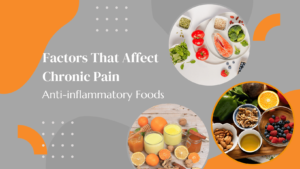“A healthy outside starts from the inside.” – Robert Urich
As discussed in the previous newsletter, certain types of food contribute to inflammation in the body. Not only can we reduce chronic inflammation by decreasing intake of inflammatory foods, but we can also decrease the effects of chronic inflammation by consuming foods that are specifically anti-inflammatory in nature.
The following are some of the top anti-inflammatory foods:
- Berries – ex: strawberries, blueberries, raspberries, blackberries. Contain fiber, vitamins, and minerals, as well as antioxidants which reduce inflammation.
- Fatty fish – ex: salmon, sardines, herring, mackerel, anchovies. Contain Omega-3 fatty acids which can reduce inflammation.
- Nuts – ex: almonds, walnuts, pecans
Cruciferous vegetables – ex: broccoli, cauliflower, Brussels sprouts, and kale. Contain antioxidants. - Green tea – contains compounds which inhibit inflammation
- Avocados – contain potassium, magnesium, fiber, and monounsaturated fats
- Peppers – ex: bell peppers, chili peppers. Contain Vitamin C and antioxidants.
- Mushrooms – ex: truffles, portobello, and shiitake. Contain phenols and antioxidants.
- Grapes – contain anthocyanins and antioxidants, which reduce inflammation
- Turmeric – a spice often used in curries and other Indian dishes. Contains circumin, a powerful anti-inflammatory compound.
- Ginger – contains anti-inflammatory compounds
- Garlic – contains anti-inflammatory compounds and boosts the immune system
Extra virgin olive oil – contains antioxidants and healthy fats
Dark chocolate (can I get an amen?!) – contains antioxidants (please note: the lighter/milkier the chocolate the more added sugar and the less anti-inflammatory benefits) - Tomatoes – high in Vitamin C and antioxidants
- Cherries – rich in antioxidants
Pro tip: consider purchasing organic versions of berries, bell peppers, grapes, and cherries, if possible, to minimize exposure to chemical pesticides often found on non-organic versions of these foods.
Consider increasing the above mentioned anti-inflammatory foods in your regular diet if dealing with chronic pain, inflammation, and fatigue. In conjunction with dietary adjustments, physical therapy can play an important role in reducing chronic inflammation and addressing chronic pain. For example, manual interventions such as dry needling and cupping can help reduce toxins in the body and bring muscles back into an acute inflammatory state to allow the body to bring healing cells to the painful areas. Specific stretching and strengthening activities after pain is managed can help get you back to doing the things you love with less limitation.
Stay tuned for Part 3 of this newsletter, where we will discuss additional factors that affectchronic pain and inflammation.
We would love to journey with you and help reduce your chronic pain and inflammation. Don’t let chronic pain hold you back any longer from doing what you love to do! Please reach out to Elite Muscle Recovery so we can help you decrease pain, improve function, and increase your quality of life!
Kind regards,
Dr. Katelyn Renard PT, DPT, OCS



